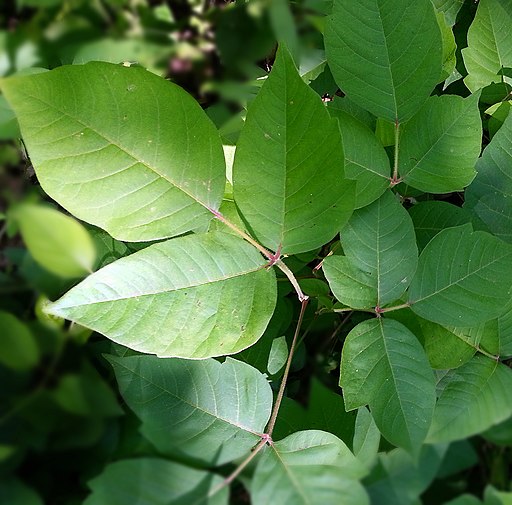Poison Ivy is famous for spreading intense rashes that can leave you distressed for a month. This is why Americans, especially northern Americans are terrified of encountering it on their hikes and bike rides.
Poison ivy may look like any typical plant, but the consequences of coming in contact with it are pretty dire. Many who have never seen it wonder about its appearance and come up with the question, does poison ivy have thorns on the stem? Read ahead and find out the answer.
Does Poison Ivy Have Thorns On The Stem?
The direct answer to this question will be no. It doesn’t have any thorns anywhere.
Check if Poison Sumac and Poison Oak have thorns.
Appearance

Poison ivy comes from the Anacardiaceae family, famous for producing plants with toxic resin. In this family, there is also poison oak and poison sumac. It is abundant in northern America, mainly in the clearings or hillsides.
Some might confuse poison ivy with the similar-looking toxic plant from the same family, poison oak, with thorn-like structures on its stems. But the lack of thorns in poison ivy indicates that the plant is the lesser toxic poison ivy, not the more dangerous poison oak.
Poison Ivy is also very noticeable as it comes in a cluster of three leaflets.
How Does Poison Ivy Cause Rashes?
The rash appears on the human skin due to an oily resin called urushiol. It can be found in the plant’s leaves, stems, and roots, making it toxic.
At first, the rash starts as small bumps that turn into red patches.
The rash spreads in a pattern the leaves brush against the skin. But it can spread out if you get the infection from the presence of urushiol in your clothes or things.
Symptoms Of Poison Ivy
The symptoms of poison ivy infection are mainly skin redness, intense itching, swelling, and painful blisters.
If by any chance you inhale the smoke of burning poison ivy, it can also adversely affect your lungs and cause difficulty in breathing.
How To Treat The Rashes?
The rash caused by this plant should usually go away within two or three weeks. But if it doesn’t go away, we request you to visit a doctor and seek medicinal help.
- You can always use creams like cortisone or calamine lotion that can relieve the itch.
- Oral antihistamines will help you sleep better if you can’t sleep because of the rash.
- Wash the affected area with cool and clean water. Adding a cup of baking soda to water also helps.
- Use a cold compressor to relieve the affected area.
Wrapping It Up
Poison ivy might not be deadly enough to kill anyone, but it is harmful nonetheless. So if you get in contact with one, we recommend you go to a doctor without waiting for a rash to emerge. The faster you will take medical action, the better.
*Disclaimer – All the treatments recommended here are taken from many sources. So please receive a proper diagnosis from a trained physician.
Featured Img Src: Jaknouse, CC BY-SA 3.0, via Wikimedia Commons.
